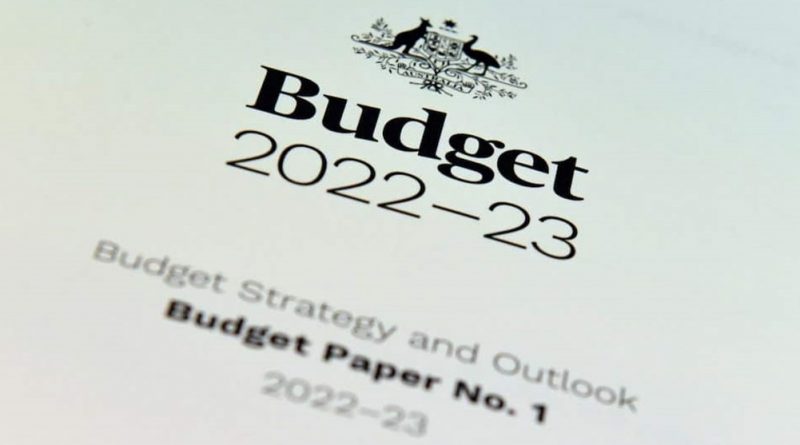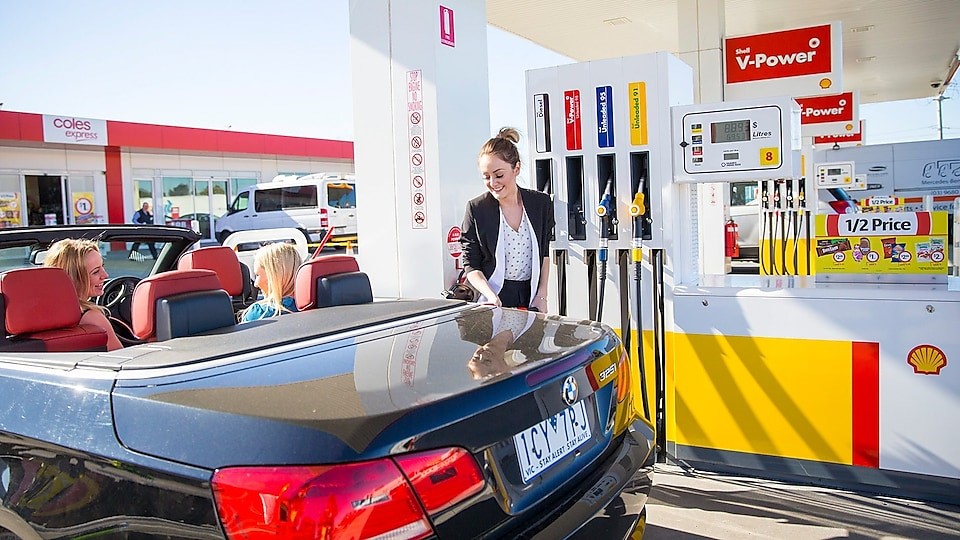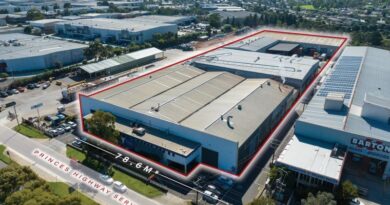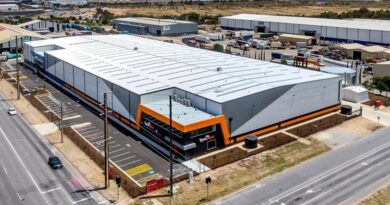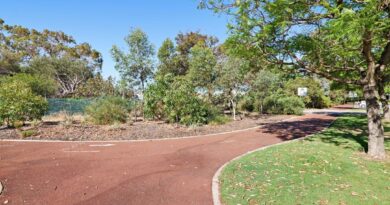Federal Budget 2022-23: how will it affect Australia’s key property sectors?
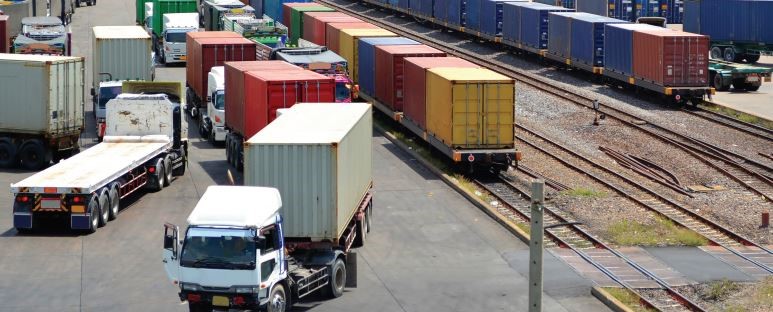

This is an excerpt of a Colliers Research report republished with permission. To download the full document, follow this link.
Australia’s resilience over the last 12 months and outperformance of its own forecast outlook has now provided a base to support more sustained economic growth moving forward.
Front and centre of the Budget were supporting measures to ease the growing impacts surrounding the cost of living.
These measures include a temporary cut in the fuel excise and one-off payments and tax offsets to welfare and low- and middle-income earners, as well as measures to further support housing affordability and first-home buyers.
This will somewhat support the ongoing recovery of retail spending, however noting that headwinds still exist with further inflationary pressure and cash rate rises on the horizon.
- The Government has announced several measures to address the growing pressures surrounding labour shortages and skill gaps including a focus on bringing skilled migrants to Australia.
This will continue to support the growth and productivity of businesses and enable them to finalise their longer-term office space strategies with more certainty.
- The spending spree on infrastructure continues, and alongside an additional focus on regional infrastructure, will support the strengthening of supply chain efficiencies benefiting the industrial and logistics sector.
- A number of initiatives announced provide a continued focus on ensuring Australia has defensive strategies in place including military defence, environmental defence and defences against onshore manufacturing and supply chain disruptions to ensure long-term security and stability in Australia.
This highlights that there is still a continued focus on potential risks to the medium to long term outlook amidst continued domestic and global uncertainties.
- The delivery of the latest Budget is somewhat more complex with the imminent announcement of the Federal Election.
We do expect business and consumer confidence to increase following the budget, however more as a result of the positive economic tone supporting the backdrop of the Budget rather than the Budget measures themselves.
This alone will provide further support to investors to have continued confidence in Australia’s property market fundamentals.
Background
Almost 12 months on from the previous Budget announcement and once again the events of the last year has provided a somewhat different backdrop to the latest Budget announcement.
The last Federal Budget was on the 11th of May 2021 and at that time Australia was looking beyond the major impacts of the pandemic over 2020 and shifting focus to a more sustained recovery with limited further disruption expected.
However, the Delta outbreak in Q3 2021 and the subsequent Omicron outbreak through the end of 2021 and into 2022 saw Australia adopt a heightened focus on a more rapid vaccination rollout to allow the opening of the economy whilst living with community transmission.
Despite the fact that some of the assumed risks that were outlined in the previous Budget did eventuate, such as further COVID-19 variants and outbreaks and the associated lockdowns including domestic border closures, Australia’s economy has been resilient and outstripped previous forecasts of the economic recovery. The Federal Budget was handed down on the 29th of March 2022.
Australia’s net deficit has been revised down from $99.2 billion to $79.8 billion off the back of the resilience in the Australian economy over the last 12 months, particularly through high employment numbers and near record high commodity prices.
Despite this better than expected result, the Budget is expected to stay in deficit over the next decade, but will decrease as a proportion of GDP from 3.4% currently to around 0.7% by 2032/33.
The delivery of the latest Budget is somewhat more complex with the imminent announcement of the Federal Election which needs to be held by the 21st May.
We do expect business and consumer confidence to increase, however more as a result of the positive economic tone supporting the backdrop of the Budget rather than the Budget measures themselves.
This alone will provide further support to both businesses and investors to have continued confidence in Australian property market fundamentals.
Federal Budget Overview
Below is a brief overview of some of the measures announced that may have direct or indirect implications to the real estate sector.
Cost of living
Inflationary pressures are building and being felt by Australians particularly around rising petrol prices and the cost of goods and services.
A key focus in this year’s Budget has been the announcement of some immediate changes to provide some relief to rising cost pressures.
The following initiatives were announced to tackle cost of living impacts:
- Fuel excise reduction – the cost of fuel for Australians and Australian businesses has risen significantly over the last 12 months.
The average petrol retail price increased by 19.7% in 2021 compared to 2020 triggered by supply chain constraints and global demand rising faster than supply following the rebound from COVID-19 related lockdowns.
This has been further exasperated over the first quarter of 2022 with average National prices increasing by a further 30% (to 27th March) as a result of the war in Ukraine, with Russia being the third largest supplier of oil globally.
In response to this, the Government has announced a 6-month 50% reduction in fuel tax cutting the excise from 44.2 cents per litre to 22.1 cents at a net cost to the Budget of $2.9 billion.
This will assist with the impact to Australians who are being hit two-fold with the increased cost of petrol at the pump and a higher cost of goods.
- One-off tax offset – 10 million low and middle income earners will receive a one-off cost of living tax offset at a cost to the Budget of $4.1 billion.
This combined with the low and middle income earners income tax offset (LMITO) will see eligible single income households receive $1,500 and $3,000 for dual income households.
- One-off cost of living payment – A $250 income tax-exempt payment to six million pensioners, welfare recipients, veterans and eligible concession card holders at a cost of $1.5 billion. It will be paid automatically in April 2022.
Measures to help alleviate labour constraints
In the last Budget a key theme was the continued recovery of Australia’s labour market by supporting job creation and an increase of participation in the workforce.
However, with the unemployment rate the lowest since 2008 at 4.0% and the participation rate at record highs (66.4%), the theme has shifted to helping to alleviate the substantial labour constraints across many industries.
These initiatives include:
- The extension to 30 June 2022 of the Boosting Apprenticeship Commencements (BAC) and Completing Apprenticeship Commencements (CAC) wage subsidies.
- Beyond June 2022, BAC and CAC will be replaced by a new streamlined Australian Apprenticeships Incentive System which will provide support to both employers and apprentices. New apprentices will receive $5,000 payments over two years to complete their training and employers will receive wage subsidies of up to 10% to hire new trainees.
- Much needed measures to support and encourage skilled migrants to Australia by making changes to migration and visa settings. The total permanent Migration Program planning level will remain at 160,000. However, skilled migration will account for 70%, compared to 49.8% in the 21-22 Budget and Partner visa arrangements will therefore move to a more ‘demand-driven’ basis highlighting the preference to prioritise skilled workers to Australia.
Continued big spending on infrastructure
Infrastructure spending has been a big agenda item in previous Budgets and this Budget was no exception.
New infrastructure commitments in this year’s Budget total $17.9 billion, up from $15.2 billion in the 2021 Budget.
The breakdown and major projects by state are as follows:
- NSW – $3.3 billion – Sydney to Newcastle Faster Rail Upgrade and the Milton to Ulladulla Bypass.
- VIC – $3.4 billion – Beveridge Interstate Freight Terminal and the Western Interstate Freight Terminal, as well as the Outer Metropolitan Ring Rail South.
- QLD – $3.3 billion – Brisbane to Sunshine Coast Rail Extension and the Brisbane to Gold Coast Faster Rail Upgrade.
- SA – $2.8 billion – North-South Corridor – Darlington to ANZAC Highway.
- WA – $1.7 billion – METRONET – various works.
- ACT – $51 million – Athlon Drive Duplication • NT – $237 million – Central Australian Tourism Roads. • TAS – $639.9 million – Northern Roads Package Stage 2.
- NT – $237 million – Central Australian Tourism Roads.
- TAS – $639.9 million – Northern Roads Package Stage 2
Boosting Australia’s Defence Capabilities
Amidst a backdrop of the Russian invasion of Ukraine a renewed focus on Australia’s defence capabilities have emerged in the Budget.
The Government is investing $575 billion in the nation’s Defence Force over the decade to 2029-30, including $270 billion for defence capability.
This will support a modern, expanded Australian Defence Force with regionally-superior capabilities to safeguard Australia’s interests.
New defence capabilities announced include:
- Boosting Australia’s defence workforce by 18,500 personnel by 2040 at a cost of at least $38 billion.
- Investment into future naval infrastructure, including a new submarine base on the east coast of Australia at a cost of $10 billion.
- Increasing Australia’s armoured vehicle inventory at a cost of $3.5 billion.
- In addition to the $1.7 billion 2020 Cyber Security Strategy (10-year plan), this Budget includes an additional $9.9 billion in Australia’s intelligence and cyber capabilities
Continued support to manage and respond to COVID-19
The Government has recognised the continued importance of the response to COVID-19 and as such an additional $6 billion in funding for the COVID-19 health response has been announced, particularly as we head into winter months and flu season in Australia.
This includes:
- An executed agreement with Moderna to onshore vaccine manufacturing in Australia to be based in Victoria.
The facility will provide Australia will priority access to the mRNA vaccine and support further research and development for possible future pandemics.
Strengthening regional areas
As Australian’s look further afield than our major cities to locate, particularly with a more flexible approach to working and the growing issue of housing affordability in our cities, the Budget has included a number of key initiatives to strengthen infrastructure and economic growth in regional areas.
Property implications
Office
The 2021 Budget was focused on the creation of jobs and boosting participation in the workforce, but with the recovery of Australia’s labour markets well and truly above expectations, the focus has shifted towards alleviating the pressures surrounding labour shortages which is disrupting the growth strategies of many Australian businesses.
Although the Budget has not increased the numbers for the 2022-23 permanent Migration Program, 10,000 places will be moved to the Skill stream component this financial year which supports skilled visa placements.
Skill stream places will account for around 70% of the permanent migration program for 2022-23 highlighting the governments urgency to support labour market pressures to drive business investment and productivity moving forward.
With more certainty around the ability to hire the required skilled employees moving forward and meet forecast assumptions around their workforce, Australian businesses should gain further confidence in locking in their office space requirements as we continue to move through the recovery.
The Government has also highlighted its continued focus to support the promotion of Australia at a global level.
The confirmation of $19.5 million over two years to the Global Australia Taskforce, to attract both individuals and international investment to Australia, is a positive outcome for the office sector, particularly for our major cities and the future office supply pipeline with many global corporates focusing on the next generation of office space through new developments.
Further positives for a potential uptick in pre-commitment activity is a heightened focus from occupiers on ESG factors with a focus on sustainability req Industrial`uirements.
Although few initiatives in the Budget tackled environmental or climate change, which is particularly surprising given the government’s pledge to deliver net zero emissions by 2050, Global corporates are more likely to favour new or existing prime grade assets with high ESG credentials and health and sustainability benefits.
Small businesses continue to benefit from Government support with the Budget providing a $1.85 billion cash flow boost to small to medium-sized enterprises (SME) by overhauling the tax instalment system, via the reduction of quarterly instalment estimates.
The Federal Government’s support of small businesses over the pandemic period has helped to drive down company insolvencies by 40% in the 21/20 financial year compared to 20/19.
As a result, the office sector has benefited from smaller occupiers being active in the market and has been the main driver of leasing activity through 2021.
Colliers is reporting strong levels of enquiry and deal activity, and rebound in white collar employment, which has been further supported by the announcements in the Budget around supporting skilled migrants (story continues below).
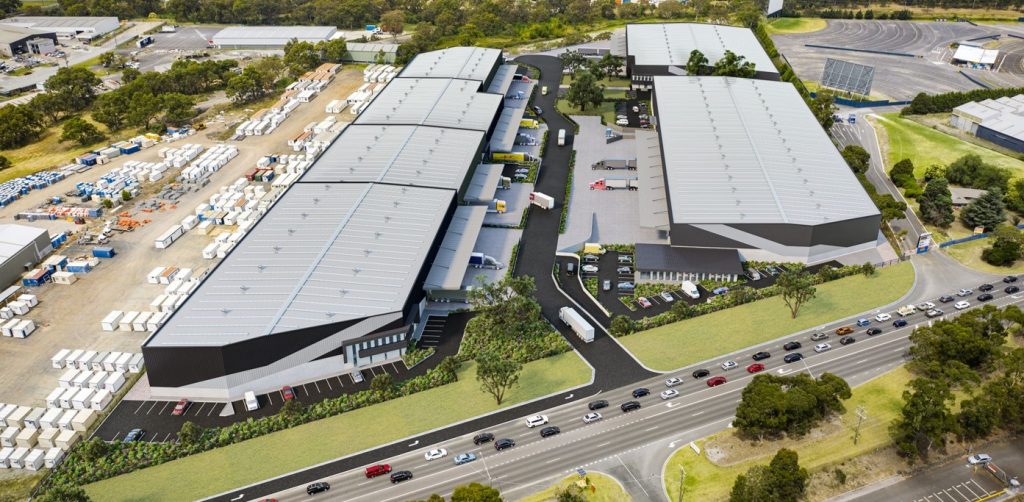
The growing certainty around economic fundamentals is expected to underpin the continued recovery in office investment activity over 2022 after already reporting a 70% uplift in volumes over 2021.

Industrial
A focus on strengthening supply chain efficiencies through continued investment in transport infrastructure and funding to ease cost of living pressures within the 2022 Federal Budget is a positive outcome for the Australian industrial and logistics (I&L) sector as it will improve connectivity and boost consumer consumption and business investment.
The total infrastructure commitment in the 2022 Budget totals $17.9 billion and in tandem with the Government’s existing $110 billion infrastructure pipeline, the projects will support both demand and new development within the I&L sector.
The large commitment to infrastructure was predominately for road and rail projects and are aimed at longer-term productivity improvements to increase supply chain efficiencies.
Victoria will see the largest funding support towards infrastructure at $3.4 billion, underpinned by the Beveridge Interstate Freight Terminal ($1.2 billion) while $740 million has been allocated for the delivery of the Western Interstate Freight Terminal at Truganina.
Compared to the 2021 Federal Budget, Queensland is the biggest beneficiary of the boost in infrastructure investment with $3.3 billion in funding being allocated, up from $1.6 billion in 2021.
The investment in Queensland will be focused on improving connectivity from Brisbane to the Gold Coast and Sunshine Coast markets in preparation for the 2032 Olympics.
Other projects such as the final stage of the North South Corridor project in South Australia ($2.3 billion) and the Sydney to Newcastle Faster Rail Upgrade ($1.0 billion) will have positive implications for their respective I&L markets and enable a more efficient delivery of goods to and from ports.
The announcement of a 50% reduction of the fuel excise for six months will provide immediate relief to not only transport and logistics operators but businesses across the supply chain.
The impact of rising fuel costs on the sector are substantial as transport can account for up to half of the overall supply chain cost.
The Federal Government’s assumptions around population growth are positive and will provide comfort to the expansion plans of I&L occupiers, particularly population-driven industries.
The estimates show that population growth will total almost 1.3 million persons between 2021 and 2025 and our analysis shows that this will generate an additional 5.1 million sqm of warehouse demand over the period.
Finally, there are several other announcements as part of the Budget that will indirectly impact the I&L sector in a positive way and includes increasing the Defence Budget to above 2.0% of GDP, increased funding to support the competitiveness of Australian exports and a further $328.3 million in funding for the Modern Manufacturing Strategy and National Manufacturing Priorities
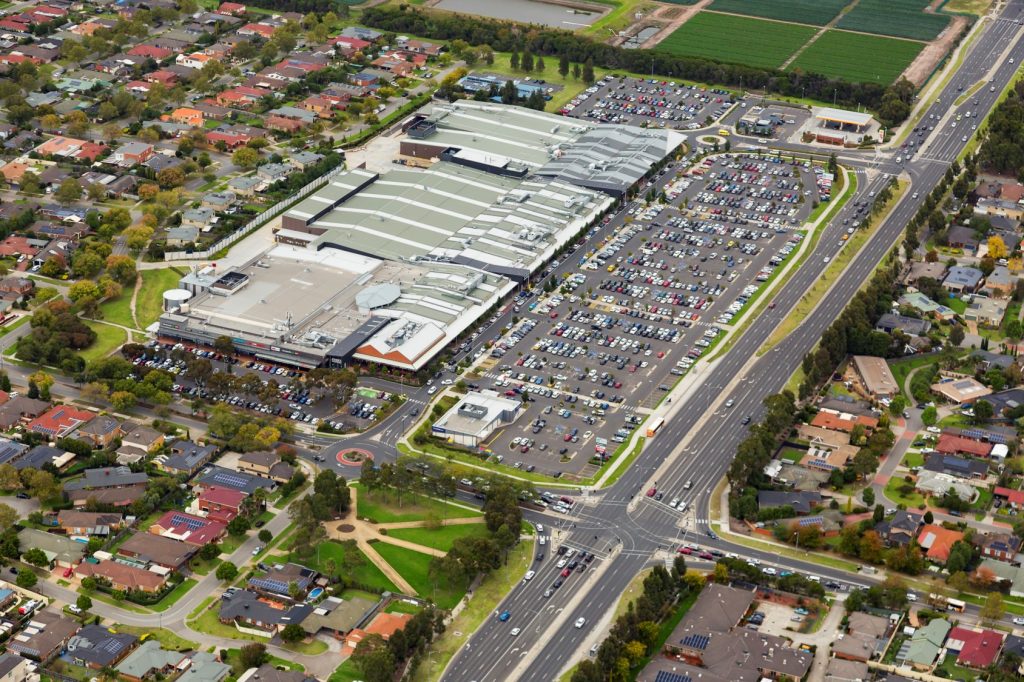
Retail
Significant increases to household costs have prompted the Government to introduce cost-of-living relief measures, its primary focus to support household spending and one of the flagship measures released in the 2022 Federal Budget.
Easing pressure on households, the Government is providing a temporary cut to the fuel excise and distributing one-off cash payments of at least $250 for pensioners and other welfare recipients.
Additionally, an election-year expansion of the Low- and Middle-Income Tax Offset will see 10 million low- and middle-income earners receive a one-off $420 cost of living tax offset.
Despite the rising cost of living, the rebound in household spending has gained momentum to date and according to the ABS, Australian retail turnover rose 1.8% in February 2022.
Most discretionary spending industries experienced strong rises as consumer cautiousness lessened following the end of mandated lockdowns.
However, higher inflationary pressure and the likelihood of interest rates rises earlier than expected will likely provide some headwinds to household discretionary spending over the second half of 2022.
A positive for CBD retail in particular was the announcement of $146.5 million to boost the tourism sector, outlined in the THRIVE 2030 strategy, targeting CBD retail and hospitality businesses affected by the pandemic.
Residential
The Government announced in last night’s 2022 Federal Budget a few key points expected to have modest impacts across the residential property markets.
The Government has focused on housing affordability in this Budget through continuation of its ‘Home Guarantee Scheme’.
An expansion of the First Home Guarantee outlines an additional 35,000 applicants each year from FY 2022/23, which will provide an increase from 10,0000 in FY 2021/22.
The Family Home Guarantee will be provided to 5,000 buyers each year starting 1 July 2022, an overall increase from its previously allocated 10,000 places over a period of 4 years.
Also, the new Regional Home Guarantee Scheme which proposes 10,000 places each year starting 1st of October 2022, is being offered to home buyers that include non-first home buyers and permanent residents that are seeking to purchase or build new homes in regional areas.
These schemes will provide assistance to a targeted range of home-buyers to ease the burden of entering the property market by closing the deposit gap.
The Government also announced a $2 billion grant, allocated to the National Housing Finance and Investment Corporation (NHFIC), which aims to improve the overall affordability of housing across the country.
This $2 billion will be split across the National Housing and Homeless Agreement (NHHHA) and the National Territory Remote Aboriginal Investment (NTRAI) groups in a bid to improve housing for less privileged communities and groups.
Overall, it is evident that the Government has largely attempted to tackle the growing housing affordability issue by providing grants and assistance to the groups who are most vulnerable to the entry-barriers of the housing market.
The Budget estimates of a strong turnaround in population growth over the medium term are positive for housing demand.
Net overseas migration will be of particular interest to the demand for new dwellings and rental properties with the Budget forecast showing assuming an improvement from -89,900 in 2020/21 with a rapid ramp-up to 235,000 by 2024/25.
Hotels
Hotels With the closure of international borders for the best part of two years, and the ongoing uncertainty surrounding state borders, the nation’s hospitality industry has been one of the hardest hit sectors throughout the COVID-19 pandemic.
Our hotels, motels and resorts have experienced significant impacts to demand and have shown tremendous resilience to survive these challenging circumstances.
Prior to the pandemic, the tourism industry provided $166 billion to the nation’s economy, with hotels around the nation being a direct beneficiary.
The government announced in last night’s Budget a $146.5 million package to support the tourism industry which will be split between the Australian Trade and Investment Commission (ATIC) and Tourism Australia.
The package will be used to fund various initiatives including marketing and data improvements, all which fall under the national ‘Thrive 2030’ strategy, aiming to improve the nation’s visitor economy via a long-term sustainable growth plan for the tourism industry.
The Budget also announced some measures to attract international students and backpackers to the country, including an incentive program which involves a full refund of visa fees for international students and working holidaymakers, along with a 30% increase in work and holiday visas in 2022-23.
Overall, the incentives and initiatives outlined in the 2022 Budget to help increase the number of international visitors into the country, should help kick-start the recovery of the tourism industry.
Agribusiness
Regional Australia is a major focus of the 2022 Federal Budget with $7.1 billion in funding for transformative infrastructure projects and combined with a continued emphasis on exports and carbon and biodiversity opportunities, the 2022 Federal Budget was favourable for the Agribusiness sector.
Key initiatives and funding for infrastructure includes $5.4 billion as part of the National Water Grid Fund to construct the Hells Gate Dam in the Upper Burdekin Catchment in North Queensland, which on completion will redefine North and Central Queensland’s agricultural sector and underpin long-term export market and investment for the decades in both soft and hard commodities.
Other initiatives as part of the National Water Grid Fund include investments into the Paradise Dam, Dungowan Dam, Darwin Region Water Supply Infrastructure and Emu Swamp Dam.
The Budget will also provide a $267.1 million commitment over four years to modernise and improve Australia’s trade system and support Australian exporters.
In doing so, this will improve the sector’s competitiveness in international markets with small and medium export businesses to benefit from $80 million in funding to assist in re-establishing their presence in overseas markets through the Export Market Development Grants program
More broadly, the agriculture sector will also benefit from several sustainability and biodiversity commitments including $100 million in funding to the Environment Restoration Fund, $139.9 million over three years to further support river health within the Murray-Darling Basin and $247.1 million to support the Biodiversity Stewardship Trading Platform.
Similar to the 2021 Federal Budget, this year’s Budget has a strong focus on protecting Australian agriculture from biosecurity risks including the potential threat of lumpy skin disease. In total, $135.6 million has been committed over five years to support and strengthen biosecurity arrangements and includes $61.6 million in funding to improve biosecurity across Northern Australia and $20.1 million to strengthen on-farm biosecurity by supporting the adoption of livestock traceability reforms.
Lastly, in response to the recent impact of natural disasters including the 2022 Floods in New South Wales and Queensland, the Government will provide an additional $84.5 million over four years for activities to improve the drought readiness and resilience of Australian farmers and communities, which is in addition to the $100 million per year expenditure under the Future Drought Fund
Healthcare & Retirement Living
The Federal Budget has provided further support to the broader healthcare spectrum with a clear focus on maintaining resilience.
Major initiatives announced as part of the 2022 Federal Budget include $1.1 billion to support the Government’s emergency response to COVID-19, $547 million to implement reforms under the National Mental Health and Suicide Prevention Plan and $2.4 billion for new and amended listings on the Pharmaceutical Benefits Scheme.
The aged care sector remains a particular focus of this year’s Budget with $926.4 million allocated to support reform within the sector, albeit well below the record $17.7 billion allocated in last year’s Budget.
While previous years’ Budgets have been more focused on growing home care services and improving wages and growth of the aged care workforce, the 2022 Budget has shifted the emphasis to reform and responding to the impacts of COVID-19.
The $926.4 million allocated in the Budget will be broadly split between the continued implementation of initiatives highlighted within the Royal Commission into Aged Care Quality and Safety while the balance will be used to respond to COVID-19.
The importance of security and resilience within the healthcare system has been made clear by allocations to support medical innovation, research and development and local manufacturing of vaccine technology.
The Government has expanded the patent box regime while a further $1.3 billion has been committed to the Medical Research Future Fund to support innovative treatments, advanced health care and medical technology.
In addition, the Government’s agreement with Moderna to onshore vaccine manufacturing in Australia is a positive for the broader life sciences sector.
Subscribe to our newsletter at the bottom of this page.

